- News
- Reviews
- Bikes
- Accessories
- Accessories - misc
- Computer mounts
- Bags
- Bar ends
- Bike bags & cases
- Bottle cages
- Bottles
- Cameras
- Car racks
- Child seats
- Computers
- Glasses
- GPS units
- Helmets
- Lights - front
- Lights - rear
- Lights - sets
- Locks
- Mirrors
- Mudguards
- Racks
- Pumps & CO2 inflators
- Puncture kits
- Reflectives
- Smart watches
- Stands and racks
- Trailers
- Clothing
- Components
- Bar tape & grips
- Bottom brackets
- Brake & gear cables
- Brake & STI levers
- Brake pads & spares
- Brakes
- Cassettes & freewheels
- Chains
- Chainsets & chainrings
- Derailleurs - front
- Derailleurs - rear
- Forks
- Gear levers & shifters
- Groupsets
- Handlebars & extensions
- Headsets
- Hubs
- Inner tubes
- Pedals
- Quick releases & skewers
- Saddles
- Seatposts
- Stems
- Wheels
- Tyres
- Health, fitness and nutrition
- Tools and workshop
- Miscellaneous
- Cross country mountain bikes
- Tubeless valves
- Buyers Guides
- Features
- Forum
- Recommends
- Podcast
review
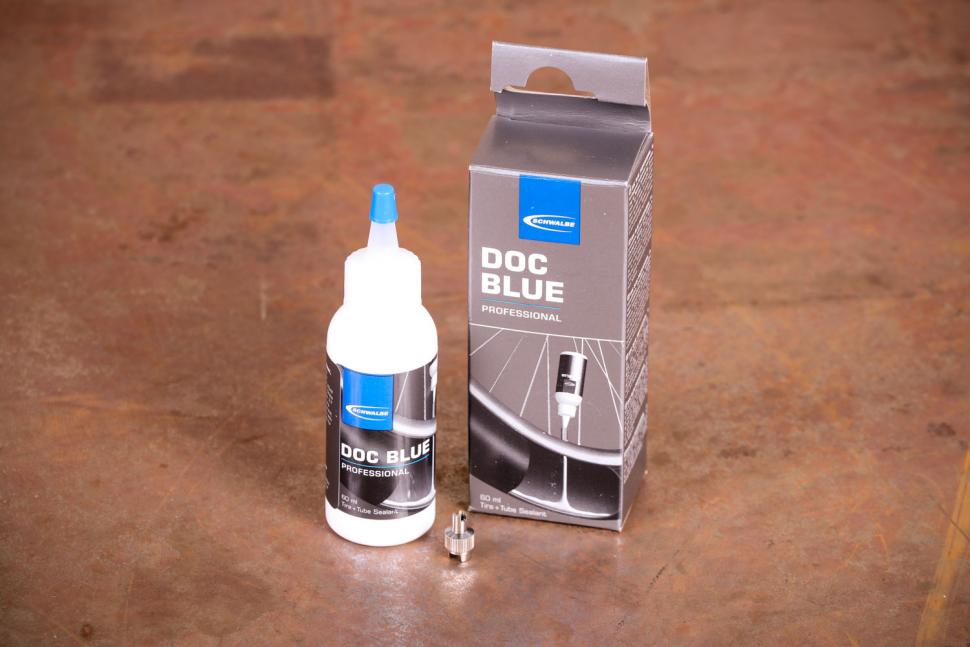 Schwalbe Doc Blue Pro Tubeless Sealant
Schwalbe Doc Blue Pro Tubeless Sealant£7.99
VERDICT:
Seals the majority of punctures but it's quite an expensive way to do it
Weight:
77g
Contact:
At road.cc every product is thoroughly tested for as long as it takes to get a proper insight into how well it works. Our reviewers are experienced cyclists that we trust to be objective. While we strive to ensure that opinions expressed are backed up by facts, reviews are by their nature an informed opinion, not a definitive verdict. We don't intentionally try to break anything (except locks) but we do try to look for weak points in any design. The overall score is not just an average of the other scores: it reflects both a product's function and value – with value determined by how a product compares with items of similar spec, quality, and price.
What the road.cc scores meanGood scores are more common than bad, because fortunately good products are more common than bad.
- Exceptional
- Excellent
- Very Good
- Good
- Quite good
- Average
- Not so good
- Poor
- Bad
- Appalling
The Schwalbe Doc Blue Professional tubeless sealant offers pretty decent protection against ending up with a fully flat tyre when out on the road, sealing against small intrusions quickly. You need to watch the tyre pressures if the hole is quite big, though.
- Pros: Easy to use applicator; seals the majority of punctures quickly
- Cons: Pricey; not so good on bigger cuts at high pressure
The popularity of tubeless setups is increasing, with many riders making the switch from a tyre and inner tube combination, but to make this all work you need a decent sealant for when the worst does happen.
> Find your nearest dealer here
Doc Blue comes in at £7.99 for a 60ml bottle, which isn't cheap, but that'll sort both the front and rear when it comes to road tyres. (It's available in a bigger 500ml bottle too, for £20.99.)
Setting everything up is simple, with a valve core removal tool in the box. Unscrew the head from the valve and poke the top of the bottle into the hole to decant the sealant – job done.
Schwalbe says that the Doc Blue will remain a liquid for between two and seven months depending on conditions, and while I've only had it in the tyres for around five weeks it has been hot down here in the south west for quite a while – mid-20s for the majority of the time, with a few days nudging the 30s.
Taking the tyres off for an inspection before writing the review saw the consistency of the sealant as thin and runny as it was when it went in, so it isn't going to need replacing anytime soon. (Schwalbe says it's also reusable.) I'll keep an eye on that and let you know if I have any concerns.
I run my tyres at quite high pressures on the road, and the majority of foreign bodies trying to enter through the rubber or sidewalls get shrugged off. That's the main reason why I don't run any of my own bikes tubeless, and I wasn't exactly surprised to get through the test period without a single issue.
Taking things into my own hands, I stabbed the 28mm tyres with a drawing pin and the sealant dealt with the puncture quickly, losing only about 15psi from the original 90psi.
I left it for a few hours and pumped the tyre back up with no issues.
Making a larger hole – well, more of a slice with a scalpel blade (about 3mm long and the width of two scalpel blades) – saw a bit more of a skirmish from the Doc Blue to stem the flow of escaping air, but again it did the job, dropping to around 40psi.
With this larger tear, if I pumped the tyre up above 60psi the sealant would hold for a while before blowing out of the hole and having to reseal it again.
It was always at the 60psi range, so now that I know, I'd continue to ride without inflating the tyre above that and then fix it with a patch or plug at home before re-inflating to my desired pressure.
> What they don't tell you about going tubeless
So, it works on the size of the holes you are likely to encounter on the road but it isn't the ultimate fix for everything. To be fair, Schwalbe does warn that it's 'Not effective on large defects (cuts/bursts)', so maybe I was being a little over optimistic.
When it comes to value, the Doc Blue does look a little pricey. The Muc-Off No Puncture Hassle sealant kit has an rrp of £9.99 for 140ml. Or you could go for Orange Seal Endurance sealant, £7.99 for a 4oz (116ml) bottle (or £14.99 for a 237ml bottle – enough for nearly eight tyres).
Up the bottle size and you get more Doc Blue for your money, 500ml for £20.99, but the same applies to the other brands, so it's still not the best value in comparison.
Overall, the Schwalbe does a decent job of keeping you rolling, but it's pricey against the opposition.
Verdict
Seals the majority of punctures but it's quite an expensive way to do it
road.cc test report
Make and model: Schwalbe Doc Blue Tubeless Sealant
Size tested: 60ml
Tell us what the product is for and who it's aimed at. What do the manufacturers say about it? How does that compare to your own feelings about it?
Schwalbe says, "Ideally suited for Tubeless conversions. Produced by Stan's NoTubes! It can also be used as a puncture protection preventative for bicycle tubes, tubular tires and standard Tubeless systems."
It does a decent enough job but there are cheaper alternatives.
Tell us some more about the technical aspects of the product?
From Schwalbe:
Dose: 60 ml/tire (Race bike 30 ml). Effective ca. 2-7 Months. Thereafter dries to a rubber film. Can be renewed. Only suitable for tubes with a removable valve core. Not effective on large defects (cuts/bursts).
Rate the product for performance:
7/10
Rate the product for durability:
8/10
Rate the product for value:
4/10
For this size of bottle it is quite expensive. Buy bigger and it works out better value.
Tell us how the product performed overall when used for its designed purpose
Seals the majority of holes without issue.
Tell us what you particularly liked about the product
Simple to use and looks like it'll last.
Tell us what you particularly disliked about the product
It can't cope with high pressures if the cut's quite big, but maybe that's asking too much of it.
Did you enjoy using the product? Yes
Would you consider buying the product? There are cheaper alternatives, so probably not.
Would you recommend the product to a friend? Yes, but I'd suggest shopping around.
Use this box to explain your overall score
For the majority of punctures you are likely to encounter on the road, Doc Blue should see you keep moving without issue, though there are cheaper ways to do it.
About the tester
Age: 40
I usually ride: This month's test bike My best bike is: B'Twin Ultra CF draped in the latest bling test components
I've been riding for: Over 20 years I ride: Every day I would class myself as: Expert
I regularly do the following types of riding: time trialling, commuting, club rides, sportives, fixed/singlespeed
Since writing his first bike review for road.cc back in early 2009 senior product reviewer Stu has tested more than a thousand pieces of kit, and hundreds of bikes.
With an HND in mechanical engineering and previous roles as a CNC programmer/machinist, draughtsman and development engineer (working in new product design) Stu understands what it takes to bring a product to market. A mix of that knowledge combined with his love of road and gravel cycling puts him in the ideal position to put the latest kit through its paces.
He first made the switch to road cycling in 1999, primarily for fitness, but it didn’t take long for his competitive side to take over which led to around ten years as a time triallist and some pretty decent results. These days though riding is more about escapism, keeping the weight off and just enjoying the fact that he gets to ride the latest technology as part of his day job.
Latest Comments
- wtjs 21 min 24 sec ago
While you're on BBC Sounds, you could download the play Pilgrims - a hilarious classic of the genre where the playwriter clearly knows nothing,...
- Rendel Harris 21 min 40 sec ago
People aren't talking about whether they could make hundreds of thousands of profit (which it has yet to be seen whether this does) but, quite...
- wtjs 53 min ago
a DPD driver I reported was NIP'd by the Met after I submitted a video of him parking on the zigzags of a zebra...
- David9694 1 hour 16 min ago
"A person was taken to hospital after a car crashed into a wall in the early hours..."
- David9694 2 hours 44 min ago
"Ah well, it was just an accident" seems to have become one of the most important ideas in the active travel campaigner's world. I guess the ...
- Rendel Harris 3 hours 30 min ago
Not really Blaupunkt though, sadly: the company was liquidated in 2016 following bankruptcy. It's just a trademark now that's licensed to various...
- whosatthewheel 4 hours 38 min ago
He won't be "jailed" for life as it will not be a "whole life" sentence. He's 22 now, so may be out as early as when he is 37 as the minimum "jail"...
- BigSigh 13 hours 55 min ago
I am absolutely certain that it's not fair for trans-identifying males who went through male puberty to compete in female sports... and that should...
- chrisonabike 15 hours 9 min ago
Nothing to do with cycling, and currently unclear as to what exactly happened. But a child is dead, a tram line isn't running services and ...
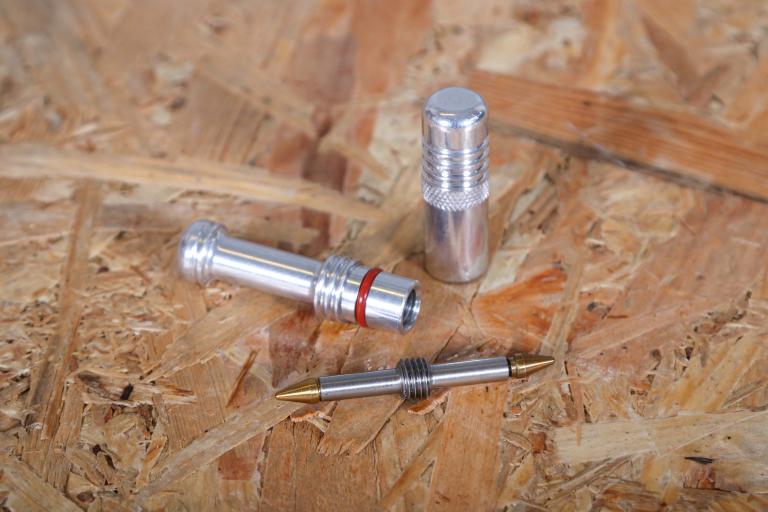
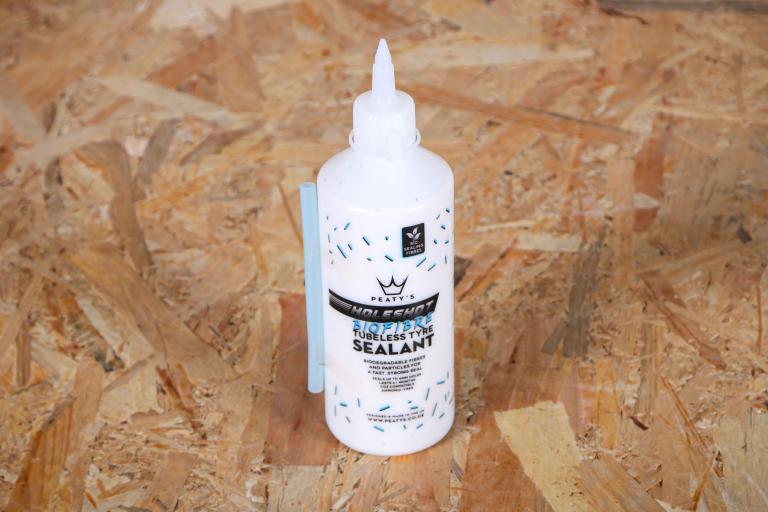
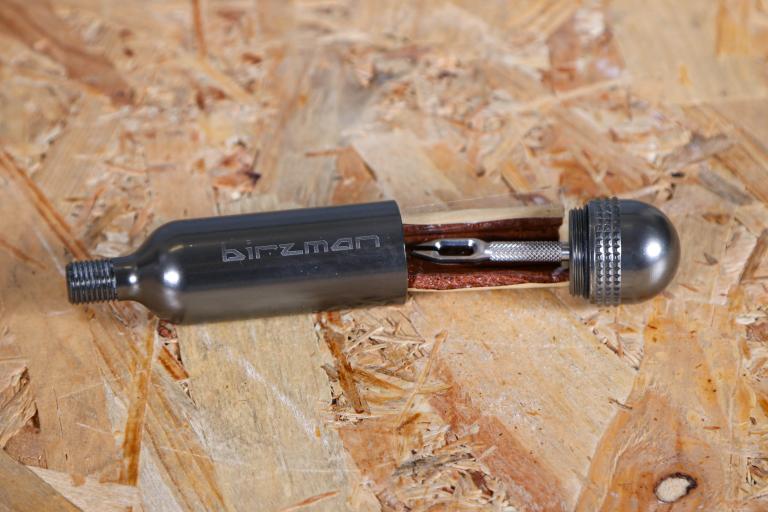
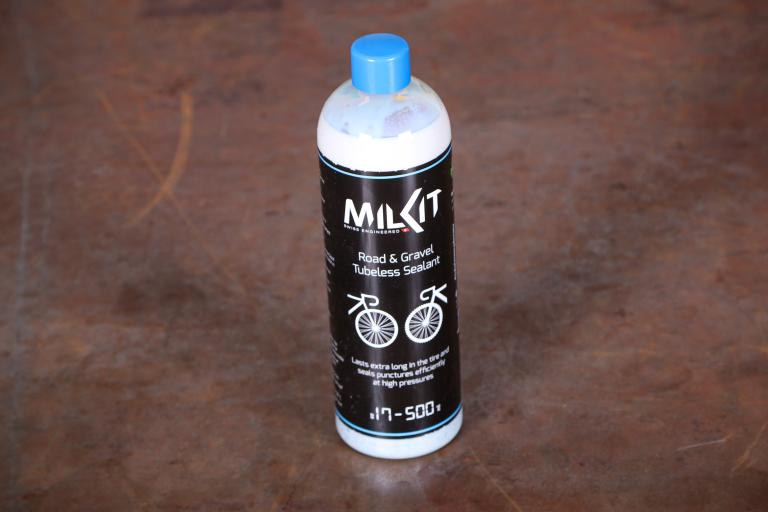
Add new comment
6 comments
I’ve tried a few over the last few years. I’ve found that Caffélatex tyre sealant works best for me. I’m 90kg and run my 28s at 65 and my 25s at 80psi.
Ive also found at lower pressures the tyre seals really quick and you lose less sealant.
Try letting air out of your tyres then once you get a wobble on going around a corner, add a few psi. I’ve commuted on 40psi without any snags too. You can run tubeless at much lower pressures than you think.
I've been using tubeless (mostly Schwalbe Pro One or Mavic Yksion) for several years now, about 6k miles per year in all conditions. I've also tried several sealants including this one - its run of he mill, stops most punctures but not all. The best by a very long way in my experience is Stans Race Sealant (not the standard Stans which is only OK, like the Schwalbe) - I've never had a tyre deflate at all with it over about 2-3 years now with any tyre. I have had 'punctures' but only found that out when changing the tyre and inspecting the inside - I don't even carry any kind of repair kit now.
I agree with Kendalred about inflating and seating then adding the sealant through the valve. I change the sealant about every 4 months (maybe not necessary so often actually as so far the Stans Race has been in perfect condition every time). Even fully deflating rarely unseats the tyre from the rim on my Ksyrium USTs (never at all with Yksions) so removing/checking/replacing the sealant with a milkit syringe or similar is simple, just a few minutes job.
I use the Mavic app to find recommended pressures for lowest rolling resistance for my 25mm tyres, which for a lightweight like me at 59kg is 75psi. For maximum comfort it would be about 70psi.
This Schwalbe sealant is just rebadged Stan's, isn't it?
I run two bikes tubeless - one for at least a year (25mm Hutchinsons - although that one is for 'best' and not used in crappy weather) and the second my commuter/crap weather bike, for a few months (28mm Hutchinsons) and have had very little trouble with either. Neither of them have had a puncture (as far as I know! - the sealant may have hidden a small penetration but I haven't noticed any). They have pretty much been the very epitome of 'fit-and-forget'. The commuter with 28mm's did need some regular topping up of the pressure for the first week or so, but it seems to have held onto the air much better since.
Sometimes the initial set up is a pain - the tyre can be extremely difficult to fit onto the rim, but once on it's not too difficult to proceed. I recently bought a track pump from Wiggle's ebay store (tri_resort) that has an air chamber which means I can blast air into the tyre quicky. This helps in seating the tyre for the first time.
In my experience it is best to add sealant when the tyre has already been seated and inflated, by deflating and adding via the valve, rather than the other method of tipping sealant into a section of tyre that has not been put onto the rim. That way I can be sure that the tyre holds pressure well without sealant, so when you do add sealant, it is like adding belt to braces.
I have a couple of tubeless ready wheelsets, but haven't attempted to run them tubeless yet - precisely because of the high pressures that road tyres generally run at. Perhaps I'll give it a go o my next tyre change, but I'd be very interested to hear of others experiences....
If you get the right sealant and are careful with your installation of the tape and valve, then you should be a convert.
I'm now three or four years into tubeless and could never go back.
Note for high pressures, with tubeless you can and should run them slightly lower than tube pressure. I weight 70kg's and run 25's at 80/85psi and that's on the higher side. With tubes, I always used to run 25's at 110psi.